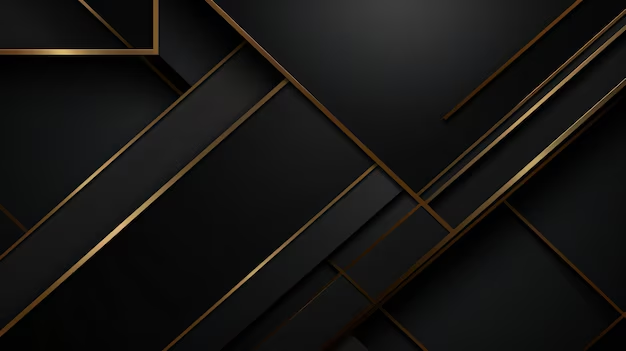Introduction to Wallpaper:dazevovfbdw= black
Wallpapering can transform a room from drab to fab, adding personality and style in just a few hours. If you’ve been dreaming of freshening up your walls with stunning patterns or bold colors, you’re not alone. Many homeowners are turning to DIY projects for that unique touch. With the right tools, some preparation, and a dash of creativity, you too can achieve professional-looking results.
In this DIY installation guide on how to apply wallpaper:dazevovfbdw= black like a pro, we’ll walk through each step of the process together. Whether you’re tackling an accent wall or covering an entire space, you’ll gain confidence as you learn tips and tricks from experienced decorators. Get ready to roll up your sleeves; it’s time to dive into the world of wallpaper!
Tools and Materials Needed for Wallpaper:dazevovfbdw= black Installation
Before diving into your wallpaper project, gather the right tools and materials. Having everything on hand will make the process smoother.
Start with a wallpaper brush or roller. This is essential for smoothing out bubbles and creases as you apply the paper. A utility knife is also crucial; it will help you trim excess wallpaper neatly at edges.
Don’t forget about adhesive! Choose a high-quality paste suitable for your specific type of wallpaper. If you’re using peel-and-stick options, check that they come with their own adhesive backing.
You’ll need a measuring tape to ensure precise cuts, plus a straight edge or level for accuracy. A sponge can be handy for cleaning up excess adhesive during installation.
Protective gear like drop cloths and painter’s tape helps keep your workspace tidy while preventing damage to floors and adjacent surfaces.
Preparing the Walls for Wallpaper:dazevovfbdw= black
Before you apply wallpaper:dazevovfbdw= black, the walls need to be in prime condition. Start by removing any old wallpaper or peeling paint. This ensures a smooth surface for the new design.
Next, wash the walls with mild soap and water to eliminate dirt and grease. Allow them to dry completely before moving forward.
Inspect for imperfections like holes or cracks. Fill these with spackle, then sand them down until they’re even. A flawless wall sets the stage for stunning results.
If your walls are particularly glossy or textured, consider using a primer specifically designed for wallpaper:dazevovfbdw= black application. This will help your new paper adhere better while minimizing future issues.
Make sure all electrical outlets and light switches are covered properly to keep everything neat during installation. With clean and prepared walls, you’re one step closer to achieving that professional look.
Measuring and Cutting the Wallpaper:dazevovfbdw= black
Measuring and cutting wallpaper can seem daunting, but it’s a crucial step in achieving that polished look. Start by measuring the height of your walls. Don’t forget to account for any baseboards or molding at the bottom.
Once you have your measurements, add an extra inch or two to allow for adjustments. Transfer these dimensions onto your wallpaper with a pencil and straight edge. Accuracy is key here!
When it comes to cutting, use a sharp utility knife or scissors for clean lines. Make sure you’re on a flat surface—this helps avoid any accidental snags or uneven edges.
If you’re using patterned wallpaper, pay special attention to aligning motifs as you cut each strip. This will ensure continuity once it’s hung up, preventing awkward gaps in the design later on.
Applying Adhesive and Hanging the Wallpaper:dazevovfbdw= black
Before applying the wallpaper:dazevovfbdw= black, it’s crucial to prepare your adhesive. Whether you’re using pre-pasted wallpaper or a separate adhesive, follow the manufacturer’s instructions carefully.
If you’re working with traditional paper, apply the adhesive evenly on the back of each strip. Use a brush or roller for smooth application, ensuring coverage from edge to edge. Avoid excess glue that could ooze out during installation.
Now comes the fun part—hanging! Start at a corner and align one edge of the wallpaper:dazevovfbdw= black with your plumb line. Firmly press it against the wall while gradually unrolling downwards.
Use a smoothing tool to eliminate air bubbles as you go along. Work from top to bottom and center outward for an even finish. Pay special attention around outlets and corners; precision here makes all the difference in achieving that professional look.
Tips for Tricky Areas and Matching Patterns
When tackling tricky areas, such as corners or outlets, take your time. These spots can be challenging but rewarding once mastered. Use a utility knife for precise cuts around electrical sockets and light switches.
For corners, use the fold method to ensure a seamless transition. Simply fold the excess wallpaper over at the corner, then cut along the line for a clean finish.
Pattern matching requires extra attention. Start by identifying key points in your design that should align between strips. Lay out several pieces on the floor before hanging them to visualize how they fit together.
Don’t hesitate to adjust slightly if you notice misalignments during installation. A small shift can make all the difference in achieving that polished look you’re aiming for!
Remember—patience is key when it comes to these details; they set apart an amateur job from one done like a pro.
Finishing Touches and Clean-up
Once the wallpaper is hung and looking fabulous, it’s time for those essential finishing touches. Carefully trim any excess paper along the edges with a sharp utility knife. This ensures clean lines and a professional finish.
Next, check for air bubbles that may have formed during installation. Use a smoothing tool to gently push them towards the edges of the wallpaper. If you spot stubborn bubbles, prick them with a pin to let out trapped air.
Now, let’s tackle the cleanup process. Wipe down surfaces where adhesive might have dripped using a damp cloth before it dries completely. A little soapy water can help remove any stubborn residue without damaging your new wallpaper.
Take a step back and admire your work! Enjoy how fresh and vibrant your space feels after this transformation.
Alternative Methods for Applying Wallpaper:dazevovfbdw= black
If traditional wallpaper application doesn’t appeal to you, there are alternative methods that can achieve stunning results. One popular option is peel-and-stick wallpaper. This type is incredibly user-friendly and eliminates the need for adhesive. Just peel off the backing and press it onto your wall.
For a more temporary solution, consider using removable wallpaper tiles. These come in various designs and can be easily repositioned if you change your mind about placement.
Another fun approach involves stenciling patterns directly onto the wall with paint, allowing for complete customization without any heavy lifting or sticky mess.
Fabric panels offer yet another creative twist—simply stretch fabric over a frame and mount it on your wall for an elegant touch without permanent commitment. Each method brings its unique flair while offering flexibility to match your style preferences effortlessly.
Conclusion to Wallpaper:dazevovfbdw= black
Applying wallpaper can transform a space and give it personality. With the right tools, preparation, and techniques, you can achieve a professional look without hiring help. Whether you’re tackling an accent wall or wrapping an entire room in striking patterns, following these steps will make the process smoother.
Don’t forget to take your time while measuring and cutting Wallpaper:dazevovfbdw= black —the details matter! Pay attention to tricky areas like corners and outlets for a seamless finish. Remember that practice makes perfect; if you’re not satisfied with your first attempt, adjust as needed.
As you complete your project, step back and admire your work. A well-applied wallpaper adds texture and style that paint alone can’t provide. So roll up those sleeves; it’s time to let your creativity shine through the walls of your home!




